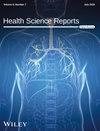Indirect Impact of the COVID-19 Pandemic on All-Cause Mortality and Cardiovascular Disease Among People With Diabetes Mellitus From Korea and Hong Kong: An Interrupted Time Series Analysis
Abstract
Background and Aims
The COVID-19 pandemic disrupted healthcare systems globally, raising concerns about its impact on the continuing care of people with chronic conditions such as diabetes mellitus (DM). However, few studies have quantified such indirect impact among individuals who were not infected by SARS-CoV-2. This study aimed to assess the pandemic's indirect impact on all-cause mortality, cardiovascular disease (CVD) diagnoses, and healthcare utilization among people with DM in Korea and Hong Kong.
Methods
We conducted a retrospective, closed-cohort study of 1,226,685 individuals (926,230 from Korea; 302,455 from Hong Kong) with a documented diagnosis of DM in 2014 but without any existing cardiovascular disease (CVD) or SARS-CoV-2 infection from January 2015 to December 2021. The cohorts were followed from January 2015 to December 2021. Interrupted time series analysis was used to assess monthly changes in all-cause mortality, CVD incidence, and healthcare utilization rates during the pandemic, compared to those in the pre-pandemic period.
Results
After the initial COVID-19 outbreak in February 2020, all-cause mortality did not change significantly in either location. In Hong Kong, CVD incidence significantly declined in 2020 (IRR 0.824, 95%CI 0.732–0.929) and rapidly rebounded to the pre-pandemic level in 2021 (IRR 1.049, 95%CI 0.915–1.203). In contrast, Korea showed a reversal of the pre-pandemic decline with CVD incidence increasing significantly in 2021 (IRR 1.108, 95%CI 0.996–1.015). Outpatient visits in Korea declined at the start of 2020 (IRR 0.890, 95%CI 0.826–0.958) and remained below expected levels through 2021, while Hong Kong showed no significant changes. Hospital admissions in Korea also declined significantly and did not recover.
Conclusion
The outbreak disrupted healthcare utilization among people with DM, leading to a temporary decline in CVD diagnoses. In Hong Kong, CVD incidence normalized in 2021, while in Korea, the continued increase in CVD incidence may be related to sustained care disruption.


 求助内容:
求助内容: 应助结果提醒方式:
应助结果提醒方式:


